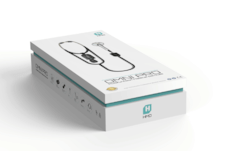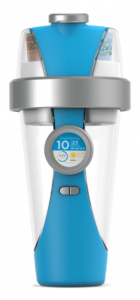![]() As the online war with the bad guys escalates, the target is moving away from the devices to the people who own them. Jamie and Daniel look at this tactical shift with AVG‘s Todd Simpson.
As the online war with the bad guys escalates, the target is moving away from the devices to the people who own them. Jamie and Daniel look at this tactical shift with AVG‘s Todd Simpson.
AVG’s goal is to protect devices, data and people with a portfolio of products, from anti-virus to VPNs, parental controls to reputation protection. As more and more services come online, people are becoming more aware of the risks and securing their activities. Protecting people is a much harder problem, especially with the rise of the Internet of Things and many connected devices in every home. Things that used to be physical security, such as a door lock, become digital security problems once it’s a connected door lock that can be operated by a smartphone.
AVG’s cross-platform software is available direct from AVG and from the various app stores.
Jamie Davis is the host of Health Tech Weekly at HTWeekly.com. He is a nurse, paramedic and health journalist. Daniel J Lewis dares you to get started in podcasting with The Audacity to Podcast.
Support our CES Sponsor:
30% off all New GoDaddy Product Orders cjcgnc30
$.99 .com New or Transfer cjcgnc99 @ GoDaddy.com
$1.00 / mo Economy Hosting with a free domain! Promo Code: cjcgnc1hs
$1.00 / mo Managed WordPress Hosting with FREE Domain! Promo Code: cjcgncwp1
GoDaddy Promo Codes always save you money, check out our Promo Codes Today
Podcast: Play in new window | Download
Subscribe: Apple Podcasts | RSS | More


 Technology is improving in ways that not only allow for IOT, but also makes it easier for us to talk to our devices and appliances. IBM’s focus for the future is the “Cognitive Era” – a term they’ve coined and a market that they are going after. The overall goal is to improve the natural language understanding in IOT products.
Technology is improving in ways that not only allow for IOT, but also makes it easier for us to talk to our devices and appliances. IBM’s focus for the future is the “Cognitive Era” – a term they’ve coined and a market that they are going after. The overall goal is to improve the natural language understanding in IOT products. Have you ever wanted to watch movies outside during a backyard party or a camping trip?
Have you ever wanted to watch movies outside during a backyard party or a camping trip? 
 We all carry around, and rely on, our mobile devices. Will you have enough power to do what you need to do while you are out and about? Ventev has a line of mobile accessories that can ensure you won’t run out of juice.
We all carry around, and rely on, our mobile devices. Will you have enough power to do what you need to do while you are out and about? Ventev has a line of mobile accessories that can ensure you won’t run out of juice.


